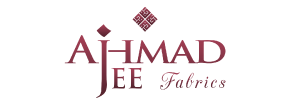It begins with web revenue after which exhibits changes for non-cash bills, such as depreciation and amortization, and for the adjustments in operating property and liabilities. This twin presentation supplies the transparency of the direct method alongside the familiar reconciliation supplied by the oblique methodology. To be of essentially the most worth to your organization, cash flow accounting requires accurate financial information. Automating some of your processes may help direct method accounting you enhance your accounting processes, ensure accuracy, and get more perception into money flows. By distinction, small companies might find the direct technique a greater fit for their wants. Those with comparatively few earnings sources are more likely to discover it less complicated to do money accounting and direct cash flow accounting.
An increase in stock means additional cash was spent than the COGS determine reflects https://www.business-accounting.net/, while an increase in accounts payable means much less cash was paid. For instance, if COGS is $50,000, stock increased by $5,000, and accounts payable increased by $2,000, the cash paid to suppliers can be $53,000 ($50,000 + $5,000 – $2,000). This adjustment process is applied to other items like salaries expense and the change in salaries payable to search out cash paid to employees.
The direct methodology focuses on reporting precise money receipts and funds, offering a clear, clear view of liquidity. The Direct Technique serves as a sensible software for various stakeholders to gain a deeper understanding of a company’s money actions. By offering a straightforward account of money transactions, it aids in making informed choices that may enhance monetary well being and operational effectivity. The case research above exemplify how the Direct Method could be utilized in different industries to disclose priceless insights and drive strategic business improvements. This method provides a clear picture of money actions, showing a company’s monetary health.
This discrepancy prompted adjustments of their payment terms and collection processes, enhancing their operating money flow. While the Direct Method provides a clear snapshot of cash transactions, it is essential to think about these challenges and limitations when deciphering the data. Stakeholders must weigh the detailed information towards the practicality and relevance to their particular needs, making certain they’ve a complete understanding of the company’s financial situation. From the perspective of economic analysts, the Direct Methodology provides a granular level of detail that allows for a extra thorough analysis of where a company’s cash is coming from and going to.
Clearer Presentation Of Money Flows
- Money outflows within the direct technique encompass expenses incurred in the course of operating activities, corresponding to cash payments to suppliers for items or providers, and for working expenses like hire and utilities.
- The Direct Methodology serves as a strong tool for monetary evaluation, offering a clear window into the operational money movements of a company.
- On the opposite hand, the indirect methodology begins with internet earnings and adjusts for all non-cash transactions.
- With correct training and assist, the group was able to transition easily, resulting in more correct and timely money flow reviews that provided administration with the insights wanted to make informed selections.
To calculate cash inflows from working activities, similar to money collected from clients, adjustments are made to gross sales income reported on the revenue statement. For instance, an increase in accounts receivable means some gross sales revenue was on credit and not but collected, so it’s subtracted from revenue to find actual money collected. The cash circulate statement direct methodology refers to presenting the money circulate statement centered on the actual money transactions happening inside the core operations of an organization. It directly reveals cash outflows and inflows impacting the financial place of a firm by giving an in depth and transparent view of money transactions. From the accountant’s perspective, the direct technique is appreciated for its transparency and detail, which can aid in additional accurate financial forecasting and analysis. It allows stakeholders to see the exact sources of cash inflows, similar to money obtained from clients, and the specific uses of cash outflows, like funds to suppliers.
This methodology’s granular strategy could be particularly insightful for stakeholders who’re involved in the specifics of an organization’s money transactions. Nevertheless, its complexity and the hassle required to maintain up detailed records is normally a deterrent for a lot of businesses. Finally, the choice between the direct and oblique strategies is decided by the specific wants and capabilities of the organization. From an accounting perspective, the Direct Technique supplies a clearer image of a company’s money flows because it shows the precise sources of incoming money and the destinations of outgoing money. This method is especially insightful for stakeholders who wish to understand the company’s operational efficiency and day-to-day financial well being. Discover the direct accounting methodology, a process for converting an organization’s accrual-basis knowledge into a statement of its precise cash receipts and payments.
On the other hand, the indirect methodology begins with web revenue and adjusts for all non-cash transactions. It’s usually considered much less intuitive as a result of it doesn’t immediately monitor cash move, but it can provide insights into the corporate’s accrual accounting practices. The Direct Methodology for calculating Working Cash Flows involves instantly summing all money inflows and outflows related to working actions.
It Is a useful tool for managers and investors alike, offering insights that may inform strategic choices and sign the corporate’s long-term viability. However, its practicality should be weighed in opposition to the hassle required to provide it, and companies should consider the most effective approach that aligns with their reporting capabilities and stakeholder needs. The direct technique’s transparency is considered one of its largest advantages, because it offers a clear trace of money movements. It could be more time-consuming to organize, as it requires detailed monitoring of all money transactions. Additionally, not all firms may find it easy to segregate their cash receipts and payments into purely operational activities, which might lead to inaccuracies.
How Is The Direct Technique Totally Different From The Oblique Method?
Collectors are interested in a company’s cash flow because it affects the corporate’s ability to repay loans. Thomas Richard Suozzi (born August 31, 1962) is an achieved U.S. politician and certified public accountant with extensive expertise in public service and financial management. In 1992, the international standard-setter – the International Accounting Standards Committee (IASC) because it was then – issued IAS 7 Cash Circulate Statements.
It Is a tool that can minimize via the complexity of accrual accounting, laying naked the basic cash actions that drive a enterprise. Wrongly sorting cash into working, investing, and financing could make financial statements wrong. The direct technique of cash move reporting looks at actual cash transactions in a company.
The Direct Methodology, also recognized as the Revenue Statement Technique, provides a more transparent view of a company’s cash flows by listing actual money receipts and payments throughout an accounting interval. While the Direct Methodology offers a clearer picture of the place cash comes from and where it goes, it could be more labor-intensive to implement as a end result of detailed monitoring of all cash transactions. The direct accounting technique is a technique for preparing the operating activities part of the Statement of Cash Flows. This strategy presents a company’s cash flows by reporting the main categories of gross money receipts and gross cash funds. The result is a clear depiction of where a company’s cash got here from and how it was spent on its core business operations.








